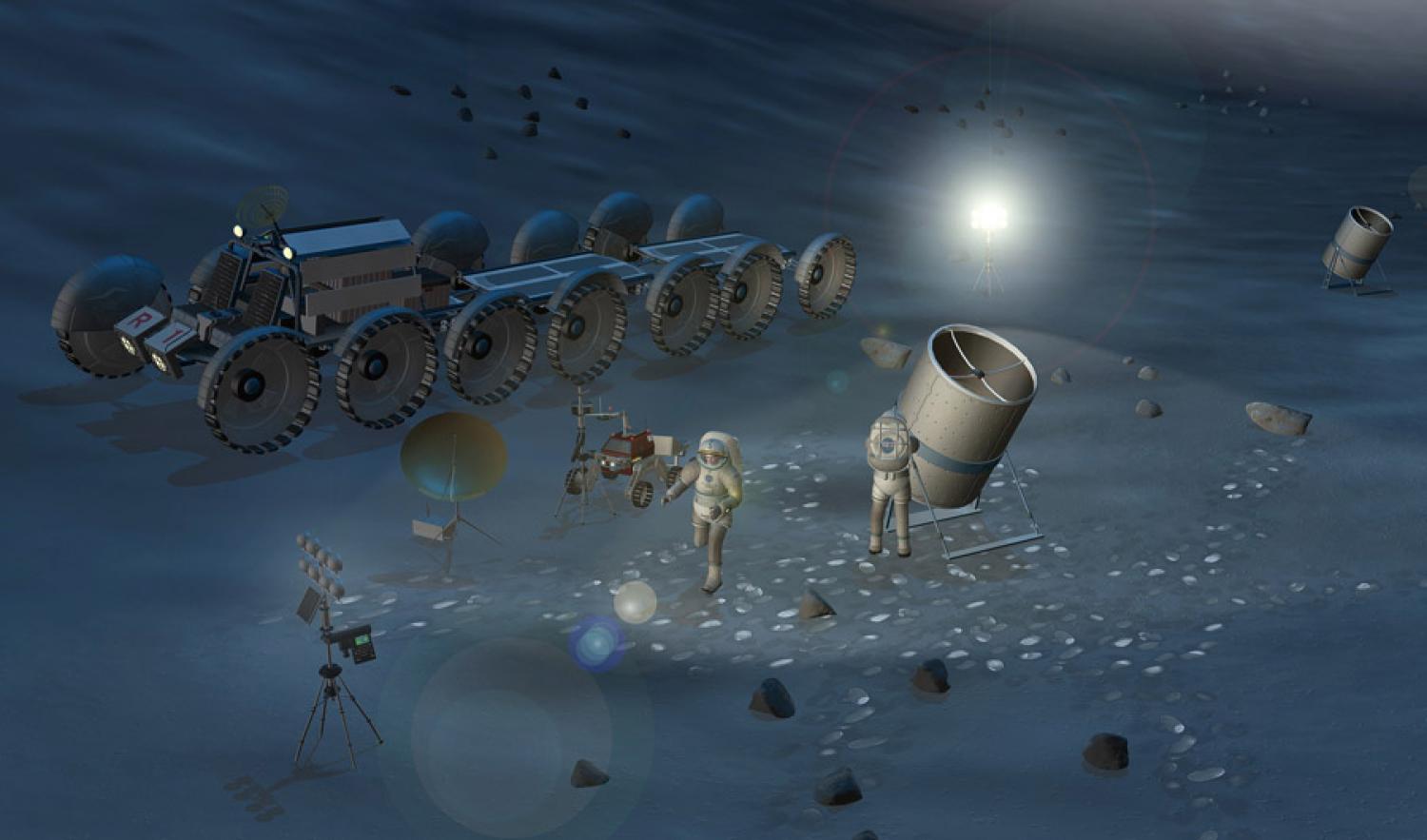Astronomers Want to Plant Telescopes on the Moon

From Inside Science: For decades, even before the iconic Hubble telescope took flight, astronomers have been launching spacecraft into orbit in the hopes of avoiding atmospheric effects that blur images taken by telescopes on Earth. But to catch clear signals of some cosmic objects, even those orbits aren’t high enough.
A group of astronomers now make the case for assembling and planting telescopes on the moon. In a series of newly published papers, they argue that our lunar neighbor, especially its far side, makes an excellent place for telescopes in the radio and infrared range. These telescopes could discover and study potentially life-friendly planets outside our solar system and explore the little-understood “dark ages” of the young universe, around a million years after the Big Bang, when the first stars formed.
“This is the time to start discussing projects on the moon. There’s a huge international focus on returning to the moon, and we wanted to make sure that science gets considered as a priority,” said Joseph Silk, a University of Oxford astrophysicist who authored multiple papers in the series.
Astronomers have already built sensitive radio telescopes on Earth, like the Low-Frequency Array (LOFAR) in Europe, but they have limits. The Earth’s upper atmosphere blocks radio signals shorter than 10 megahertz or so, limiting what the telescopes can see, said Jack Burns, a University of Colorado astronomer and director of the Network for Exploration and Space Science. Furthermore, interference from radio signals people use to communicate -- including cellphones, Wi-Fi and satellites -- can increasingly drown out the signals from the cosmos as these technologies become more widespread. Space telescopes can provide major improvements, but even when they’re orbiting hundreds of miles away, they can’t get away from it all. “The far side of the moon is the only place in the inner solar system that is truly radio quiet,” said Burns. Read more...

